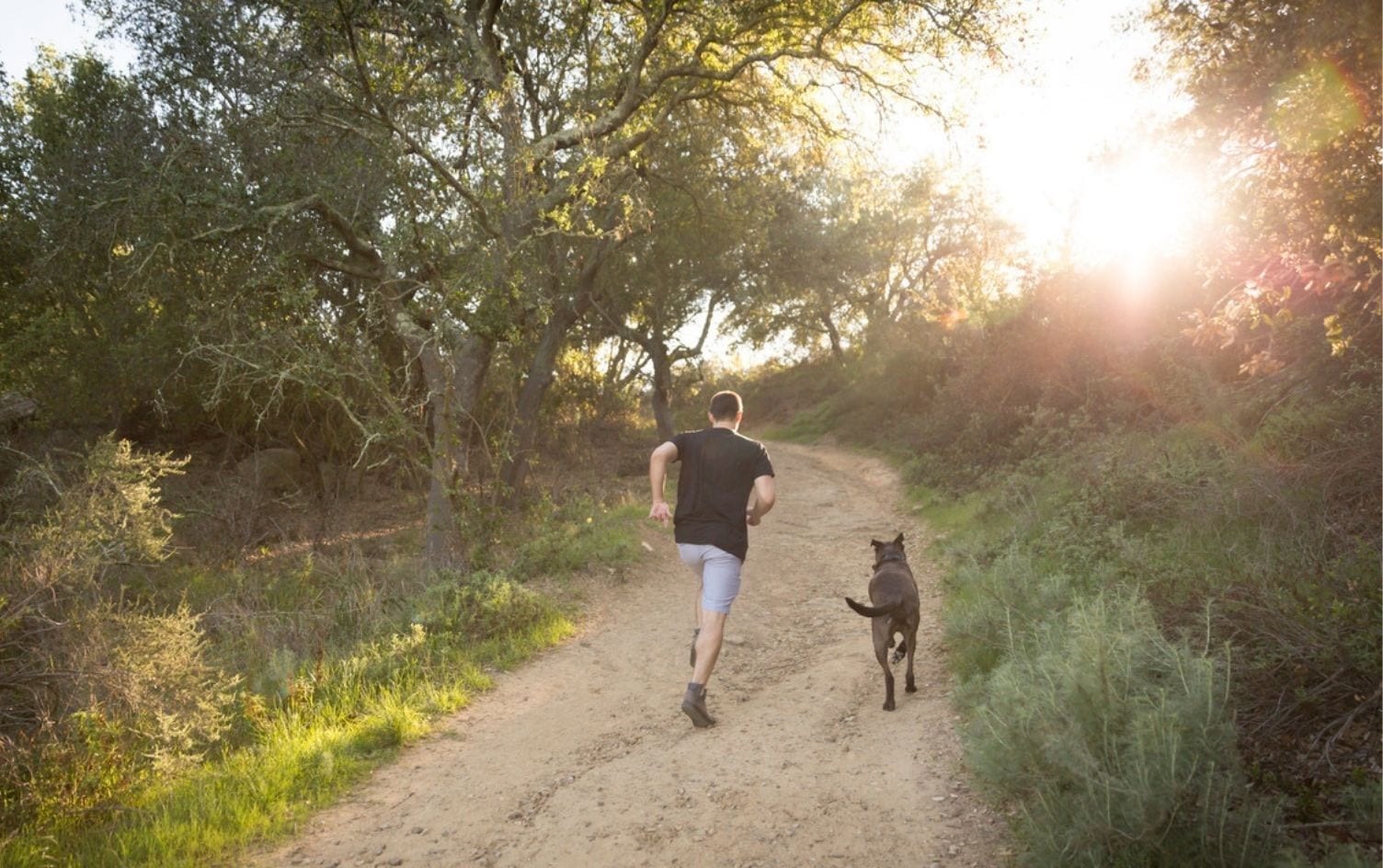They call dog “man’s best friend” for a reason. When it comes to companionship, you’d be hard pressed to find better company. They sit at your feet while you eat, helpfully cleaning up scraps as they fall to the floor. They cuddle up on the couch and watch television with you at night. They are even there to chaperone chores like yard work and vacuuming. If it were up to your dog, he or she would probably opt to be by your side every second of the day.
So why not include her in your fitness routine? Walking and running are some of the easiest activities to do with your dog. It’s good for your health and the health of your dog, and running together will also strengthen that special human/canine relationship. What’s more, a tired dog is an obedient dog. Rather than causing mischief around the house, a well-exercised dog is far more likely to behave.
Here are the five things to consider if you’re hoping to pound some pavement with your pup:
1. Size up Scooby.
You may be wondering whether your dog is even a good candidate to be your training partner. The truth is, a wide variety of dog breeds can be great runners. Big, small, short, tall, stocky, skinny or hairy, he or she doesn’t need to be a greyhound to get into running.
Dogs with short noses, such as pugs, boxers and bulldogs, can potentially be exceptions to this rule. As a result of abnormal airways, they often have trouble breathing effectively during exercise. With these breeds or really any dog, it’s always a good idea to consult your veterinarian prior to running. Your vet can also recommend what age is safe to begin running with your dog, as that varies from one breed to the next.
2. Walk before you run.
While walking down a sidewalk in a linear manner is intuitive for most humans, it isn’t for Fido. If you try to jog with your dog before he or she has been leash-trained for walking, you’re setting yourself up for frustration. Most dogs’ natural inclination is to sniff and explore, zig-zagging from side to side, in front and behind you. While there’s a time and a place for this type of unstructured exploration—like at the dog park—a run isn’t it.
During leash training, focus on teaching your dog to walk at your pace by your side. Also practice sitting at stoplights and intersections so he doesn’t get in the habit of dashing ahead into traffic. The bottom line is that your pooch needs to learn that you are the alpha dog on walks, which will then transfer over to running.
3. Become a canine coach.
Speaking of leading, when you’re training your dog to run, think of yourself as his coach. You should be the one setting the pace and choosing the route, not him. Good coaches are firm, but encouraging. Praise Fido when he is running by your side to reinforce that positive behavior.
Successful coaches are also adept at tailoring their training to specific athletes. In the same way any human would struggle to go from the couch to running several miles, so will your dog. Start with short jogs where you work on training and building fitness, and slowly work up to longer runs.
4. Follow etiquette.
It’s easy to clothesline a pedestrian or get tied up in a stroller if you aren’t paying close attention while jogging with your pup. Use a leash that is no more than six feet long—it will go a long way in keeping your dog close by and under your control. On a busy path, be sure to take in some of that slack and keep your dog within a couple feet. A hands-free waist leash is often the easiest way to keep a handle on your dog while you’re running.
As always, cleaning up after your dog remains important on runs. Tie a couple of bags around the leash and you’ll be prepped for the miles ahead. Also be wary of where you let your pup relieve himself, opting for public boulevards over private lawns.
5. Ensure safety.
Dogs don’t sweat the way we do. What’s more, they are constantly sporting a thick coat. This means that they have trouble cooling as effectively as humans, putting them at risk for overheating. To prevent heat-related illnesses in your dog, avoid running on hot and humid days. On warmer days, choose routes that take you by local water sources, like a lake or stream, where your dog can hop in and cool off.
Additionally, keep in mind that hydration is just as important for your dog as it is for you. Carry a bottle and a collapsible bowl and consider making a pit stop at a water fountain to let your dog lap up some fluids mid-run.
Making periodic stops to let your dog cool off and drink will also help prevent issues related to overexertion. Signs that your dog is struggling include excessive panting or labored breathing, limping and abrupt stopping. In most cases, if you heed the early signs of trouble, you’ll ensure the health, safety and happiness of your pup.
Photo by Mackenzie Lobby.




